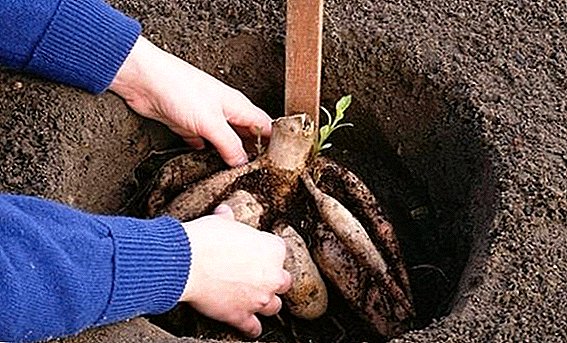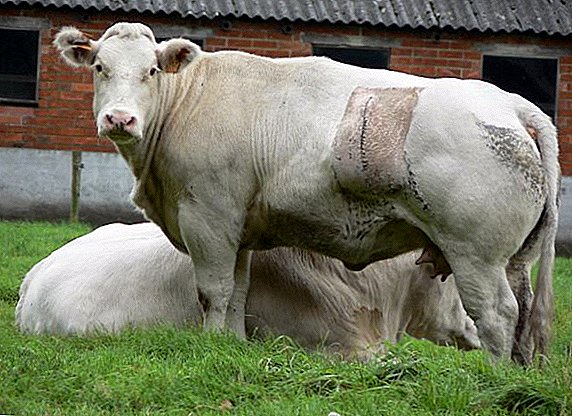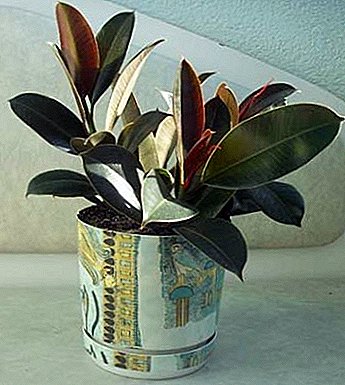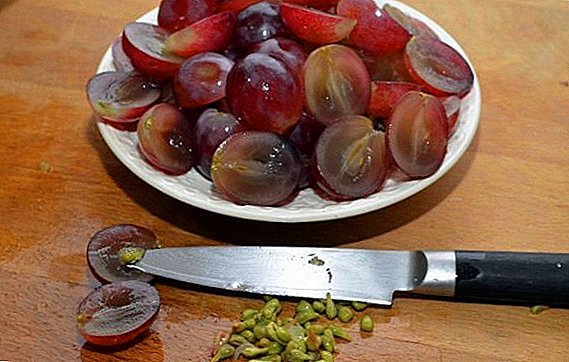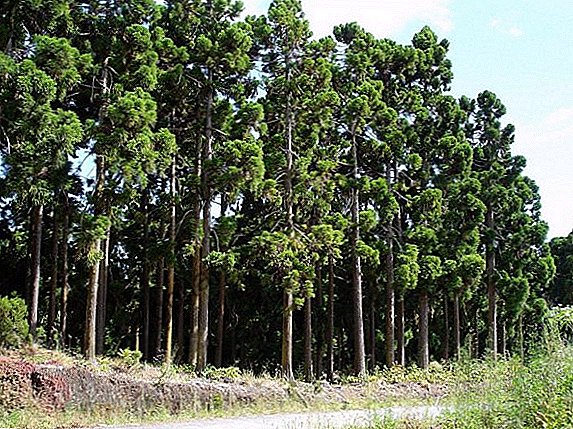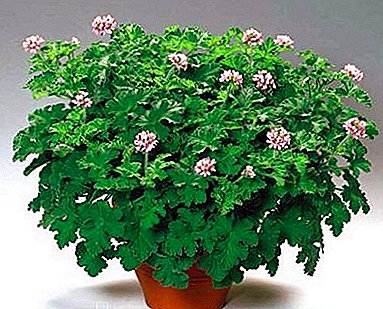
Tomatoes - a very common and popular garden culture. The key to a good and high-quality harvest is the correct and competent preparation of the greenhouse for growing this vegetable.
How and what to process this construction in the spring before planting tomatoes, as well as in the fall after harvesting, will be discussed in the article.
Additionally, we will talk about the methods of preparing, cleaning and disinfecting the soil, as well as how to create compost and lay the beds under the tomatoes.
The importance of the procedure
The quality of the crop you receive depends on how competently, correctly and in a timely manner you conduct the preparation of the greenhouse. Seedlings tomato has a certain time for planting that is why it is important during the preparation of the greenhouse.
How to prepare a greenhouse construction for tomatoes?
Necessary repairs
- Inspection of the frame: the wooden frame checks all lintels and roofing. Upon detection of faults, they are eliminated. Metal frame inspected for corrosion. When it is found on parts of the frame, they are replaced.
- Coating inspection: on the glass coating they replace broken or cracked glass, polyethylene coatings with punctures are replaced or sealed, polycarbonate coatings with defects are replaced.
Treatment
Structures and covering material
 The disinfection of the greenhouse depends on the material from which it is made.. Separately disinfected frame and covering material.
The disinfection of the greenhouse depends on the material from which it is made.. Separately disinfected frame and covering material.
Frameworks are made of metal, wood and PVC. Wood and PVC are treated with sulfur, but not metal. Sulfur spoils the metal. For metal frames used boiling water with vinegar. Polyvinyl chloride scaffolds are also treated with an acetic solution with water at a temperature of +60. For processing wooden frame suitable copper sulphate.
Coatings
The film or glass is treated with a hot solution of soap (water not higher than +40). The soap is dissolved in water and the treatment is carried out with a brush. Polycarbonate coatings are treated with a solution of manganese. The solution is washed out with a hot solution. Especially carefully handle the corners. Then dry the greenhouse drafted.
Removable film coatings
Treat with potassium permanganate, dry and store in sealed bags.
Autumn events
Cleaning
Cleaning - removal of obsolete plants. Remove aboveground and underground parts. Nothing should interfere with the cleanliness of the ridges. The remains of perennial plants must be torn out with roots and disposed of.
Soil removal
The removed soil is disinfected and carried to open ridges, poured into flowerbeds or under trees. The removed soil layer must be replaced as soon as possible.. The new layer must be fertile. The soil should be perfectly matched.
There are such ways of replenishing ridges with soil:
- soil purchase;
- self-preparation of the soil.
 Purchase of soil is easier, but it may not have all the necessary components. Therefore, it is best to prepare the soil yourself.
Purchase of soil is easier, but it may not have all the necessary components. Therefore, it is best to prepare the soil yourself.
The soil structure should be loose. The fractions of the soil should not be small, so that they do not form dirt with the water, but not large ones, so that they do not let the water flow like a sieve. Nutrients must be stored in the soil. It should be a sufficient amount of humus. It should not be mineral fertilizers.
The ability to accept and retain moisture is a must in preparing the soil. It should be a balance between the content of acid salts and alkali. It must be decontaminated. In the composition of the new soil:
- peat;
- sand;
- compost or humus.
To improve soil fertility, humic acids are used.. And to enrich the soil with humus they use rotted manure or droppings. After the preparation of the new soil, it is treated with the drug Flora-S.
Disinfection
For disinfection greenhouses resort to:
- urea treatment;
- treatment with special disinfectants;
- fumigation sulfur.
The procedure for fumigating with sulfur is good because with its help not only the soil remaining in the greenhouse is disinfected, but the entire greenhouse inside. Therefore, disinfecting a greenhouse by fumigating with sulfur is considered the best and effective.
New ground laying
This is the final stage. New soil contribute instead of the removed layer. Sleep it in such a way that there are no voids, compact and evenly distribute. Cover the beds 5 cm with a layer of clean, dry straw. After the first snow falls, they throw it on the beds with straw.
The higher the snow level, the less the soil freezes., and beneficial microorganisms continue to work on soil fertility.
Spring activities
Begin with warming up the earth.
Warm up in several ways.:
- Loosen and prepare the ground for planting, cover with black film before the landing.
- Loosen, break through the grooves, pour over hot water, bury and cover with film for 2-3 days.
 They make warm beds. Remove the layer of earth in 25-40 cm. Lay the bark, sawdust on the bottom of the groove. Top with hay or straw and sprinkled with quicklime. Lay the land back, mixed with compost or rotted manure.
They make warm beds. Remove the layer of earth in 25-40 cm. Lay the bark, sawdust on the bottom of the groove. Top with hay or straw and sprinkled with quicklime. Lay the land back, mixed with compost or rotted manure.
To prepare the soil perform such procedures.:
- Pre loosened.
- Warm up the soil.
- Fertilize with organic fertilizers.
- Neutralize acidity.
- They dig, deeply loosen and level the soil.
- Watered with biological solutions.
Chemicals
In spring, chemical treatment is very rare. Chemicals are mainly used in the fall. This is done so that the beneficial microorganisms, killed by chemistry, are restored naturally. After their application it is necessary to restore soil fertility with the help of biological preparations.
Allowable chemicals for processing:
- formalin;
- copper sulphate;
- sulfur;
- 2% iprodione;
- TMTD fungicide.
Restoration of soil fertility after the application of chemistry
Chemistry kills beneficial microorganisms and bacteria. Restore them begin a week after the use of chemistry. For a quick recovery of microflora, use Baikal Em-1.
The liquid is prepared 5 days before processing. In 4 liters of distilled water, add 40 ml of the preparation and 4 tablespoons of honey, mix and cover with a lid. Insist the solution for 5 days and then pour it over the soil. After treatment with chemistry, compost or humus is applied to restore humus..
Soil fertility can increase the solutions of potassium salts of humic acids.
Thermal spring cleaning method
In the autumn, remove the layer of soil 5-10 cm. Layer 10 cm spread it on a black film. For heat treatment using steam or boiling water.. Wash the soil with water and cover with foil.
To keep warm, throw on it hay or any other insulating material. In this state, the soil is 3 days. Then it is brought into the greenhouse and used biological preparations. After 14 days you can start planting.
Biological method of soil recovery
 Biological preparations are used to restore soil fertility. This is the most effective way. It will reduce the likelihood of fungal diseases, suppress the appearance of pathogens, improve the growth of tomatoes.
Biological preparations are used to restore soil fertility. This is the most effective way. It will reduce the likelihood of fungal diseases, suppress the appearance of pathogens, improve the growth of tomatoes.
Popular Biologicals:
- Baikal;
- Baktofit;
- Trichodermin.
Full soil recovery will occur after 3-4 years. In parallel, the greenhouse is filled with a portion of organic matter: rotted manure, compost, droppings.
Composting
Prepared during the summer with the use of any biological product and accumulated waste (tops, leaves, cut grass, shoots). Waste is laid in loose heaps. Water them with a biological product, each time their layer reaches 20-30 cm. 100 ml of the preparation are used for 10 liters of water.
To mature the compost will take 1.5-3 months. In the spring when growing tomatoes it is added as a fertilizer. Filled with compost beds, water biological product.
"Fitosporin M" for land disinfection
This fungicide is used after an outbreak of fungal diseases. The tool is in the form of a paste, powder or liquid. Pasta is more popular. A solution is prepared from it which keeps its properties for a long time. The first time used in early spring and repeated after 2 weeks.
It is best to handle in the evening when there is no exposure to the sun. Prepare the solution on the day of treatment 2 hours before it. At 10 liters of water you need 5 g of powder. From the paste prepare the solution in a ratio of 1: 2. Watering the soil with such a solution is necessary a week before planting the tomatoes.
Bookmark beds for tomatoes
The entire length of the ridge is not digging a wide trench, the depth of which is on the bayonet of the shovel. Fresh manure is laid in this trench, tamped with it and watered with boiling water. Top layer of earth poured. During perekop on each square meter contribute peat, sand and humus. In addition to organic mineral fertilizers.:
- 200 g of potassium;
- 250 g of phosphorus;
- 350 nitrogen.
How to process greenhouses before planting vegetables
Immediately before planting, it is necessary to process the greenhouse. This is necessary to prevent the development of fungal and other diseases, as well as the appearance of pests. For processing, you can use special preparations, sulfur, laundry soap.
In the process of processing the entire structure of the greenhouse and covering material is cleaned.. So is the treatment of the earth with various solutions. They are bred according to the instructions on the package and contribute to the ground.
If you follow all the above rules, you can correctly prepare the greenhouse for growing tomatoes. And with proper preparation, get a high-quality and rich harvest, which your whole family will enjoy.


 They make warm beds. Remove the layer of earth in 25-40 cm. Lay the bark, sawdust on the bottom of the groove. Top with hay or straw and sprinkled with quicklime. Lay the land back, mixed with compost or rotted manure.
They make warm beds. Remove the layer of earth in 25-40 cm. Lay the bark, sawdust on the bottom of the groove. Top with hay or straw and sprinkled with quicklime. Lay the land back, mixed with compost or rotted manure.


